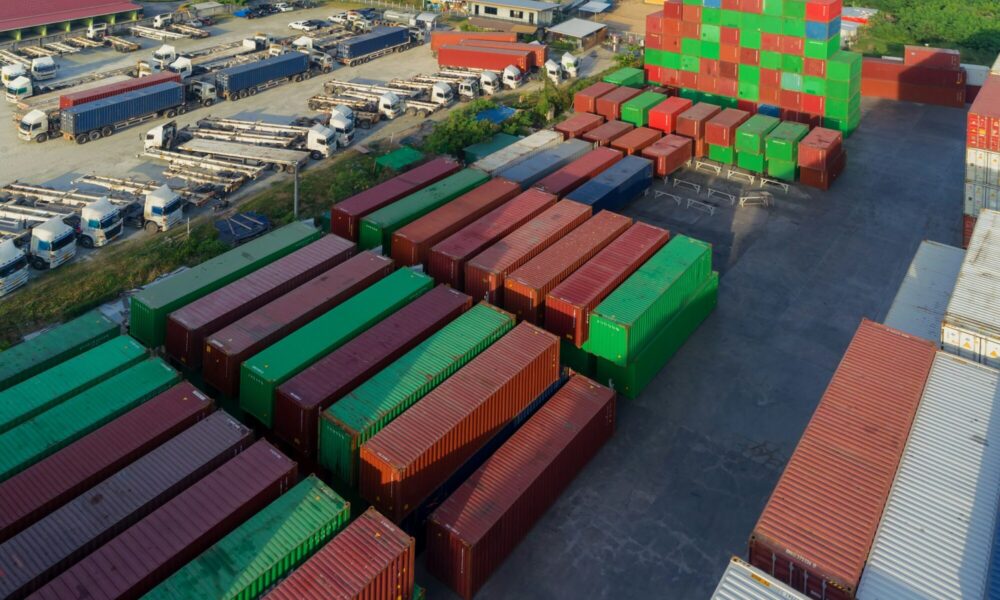How Modified Shipping Containers Are Evolving: Trends, Benefits, and Real-World Uses

Modified shipping containers have emerged as a symbol of innovation in sustainable architecture, industrial logistics, and portable infrastructure. Once considered nothing more than a tool for global trade, these steel giants are now being reimagined into homes, offices, medical units, retail spaces, and beyond. As the demand for adaptable, eco-friendly, and cost-effective solutions increases across sectors, modified shipping containers are evolving rapidly in terms of design, functionality, and application.
In this blog, we explore the major trends shaping this transformation, examine the core benefits driving their adoption, and showcase real-world examples of how they’re making a difference.
The Rise of Modified Shipping Containers
Shipping containers, originally engineered to withstand harsh maritime conditions, offer unparalleled strength, security, and modularity. When repurposed—cut, welded, insulated, wired, and refitted—they transform into fully functional structures that serve diverse needs.
This evolution is no accident. Global market shifts, housing crises, environmental concerns, and technological advancements have all contributed to the rising popularity of modified shipping containers.
Top Trends in Modified Shipping Containers
-
Sustainable and Off-Grid Living
Repurposing used containers reduces construction waste, minimizes the carbon footprint, and supports a circular economy. Many modified containers are now outfitted with solar panels, rainwater harvesting systems, composting toilets, and energy-efficient insulation to support off-grid living.
This trend is particularly strong in eco-tourism, where remote lodges and tiny homes crafted from containers attract travelers seeking low-impact experiences.
-
Pop-Up and Mobile Businesses
From food trucks and coffee shops to salons and pop-up boutiques, modified shipping containers offer entrepreneurs a low-risk way to establish a physical presence without a long-term lease. Their mobility, customizability, and rugged exterior make them perfect for festivals, city events, and urban markets.
Cities like London and New York have embraced these “container villages,” turning empty lots into vibrant community hubs of commerce and creativity.
-
Emergency and Crisis Response
In disaster-prone areas or regions affected by war, modified containers provide quick-deploy solutions for emergency housing, medical clinics, command centers, and sanitation stations. Organizations such as the UN and Médecins Sans Frontières have utilized container-based infrastructure to respond to global crises swiftly and effectively.
Their durability and stackable nature allow for quick transportation and setup in even the most challenging terrains.
-
Remote Work and Container Offices
With the rise of remote and hybrid work models, many businesses and individuals are turning to container offices as a productive escape from distractions. These self-contained units can be customized with climate control, Wi-Fi, lighting, and ergonomic furnishings, making them ideal for backyards or remote job sites.
Additionally, entire co-working spaces are now being developed using modular container designs, offering flexibility in layout and scalability as demand changes.
-
Architectural Innovation
Architects are pushing the limits of what modified shipping containers can do. Creatively configured containers are being used to construct multi-level buildings, art galleries, schools, student housing, and even vertical farms. Their modularity and uniform dimensions make them a unique puzzle piece in modern architecture.
Design firms are also experimenting with hybrid builds—blending traditional materials with containers to create visually striking and highly functional environments.
Key Benefits of Modified Shipping Containers
-
Affordability
Container-based structures are significantly more affordable than traditional construction. The base unit (a used 20-foot or 40-foot container) is often a fraction of the cost of building from the ground up, and many modifications can be done off-site, reducing labor and material expenses.
This cost efficiency is especially appealing in low-income housing initiatives or startup business environments.
-
Speed of Deployment
Modified shipping containers can be built and delivered in weeks, versus the months—or years—required for conventional builds. Their portability means that even in remote or inaccessible areas, these units can be installed quickly and efficiently.
For companies needing to expand facilities or respond to market demands fast, container solutions offer an invaluable time advantage.
-
Durability and Strength
Made from corten steel, shipping containers are designed to endure extreme weather, corrosion, and handling. This makes them ideal for use in harsh environments such as deserts, high-humidity regions, and coastal zones.
They’re also naturally secure, with thick walls and lockable doors that deter break-ins, making them perfect for storage or sensitive applications like data centers.
-
Modularity and Scalability
The standardized size of shipping containers makes them easy to stack, combine, and reconfigure. This modularity allows for scalability in design, whether you’re building a small garden office or a 50-unit hotel.
Moreover, modular builds can be expanded in phases, reducing initial investment risks while allowing room for growth.
-
Reduced Environmental Impact
Reusing shipping containers conserves resources and reduces emissions associated with producing traditional building materials. Many companies in the modification industry also prioritize eco-friendly practices, such as using reclaimed wood, low-VOC paints, and green insulation.
Container projects often appeal to environmentally conscious consumers and organizations aiming to meet sustainability goals.
Real-World Uses of Modified Shipping Containers
-
Housing and Homelessness Solutions
Nonprofits and governments are increasingly using modified shipping containers to create transitional and permanent housing for the homeless. These micro-units provide privacy, safety, and dignity at a fraction of the cost of traditional shelters.
Cities like Los Angeles and Austin have launched container housing communities, which offer shared kitchens, bathrooms, and support services to help individuals regain stability.
-
Education in Underserved Areas
These schools can be air-conditioned, tech-equipped, and solar-powered, making learning accessible even in rural or off-grid locations.
-
Healthcare Clinics
Modified containers are ideal for mobile health units, vaccination sites, dental offices, and even surgical centers. Their compact footprint, coupled with the ability to include HVAC systems, clean water supply, and diagnostic tools, makes them effective for both urban and rural healthcare outreach.
During the COVID-19 pandemic, container-based testing and vaccination centers helped reduce strain on traditional medical facilities.
-
Data Centers and Telecom Infrastructure
Tech companies have begun housing servers and network equipment in modified containers, creating “modular data centers.” These units are secure, easily cooled, and can be deployed near end-users to improve latency and performance.
This edge computing model is essential for industries like fintech, video streaming, and IoT development.
-
Agriculture and Food Production
Vertical farms and hydroponic systems are being integrated into containers to create mobile, efficient growing environments. These container farms can operate year-round and are ideal for urban agriculture, food deserts, or export-oriented production.
Companies like Freight Farms and Square Roots have commercialized this model to great success.
Final Thoughts
The evolution of modified shipping containers from humble cargo carriers to high-tech, high-style modular spaces is a testament to human ingenuity. Their adaptability, affordability, and sustainability make them one of the most promising building solutions of the 21st century.
As cities expand, climate challenges intensify, and demand for flexible infrastructure grows, the role of modified shipping containers will only continue to expand. Whether you’re an entrepreneur, a developer, a humanitarian, or an innovator, these steel giants offer a solid foundation for bold new ideas.

Source: How Modified Shipping Containers Are Evolving: Trends, Benefits, and Real-World Uses



